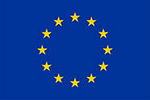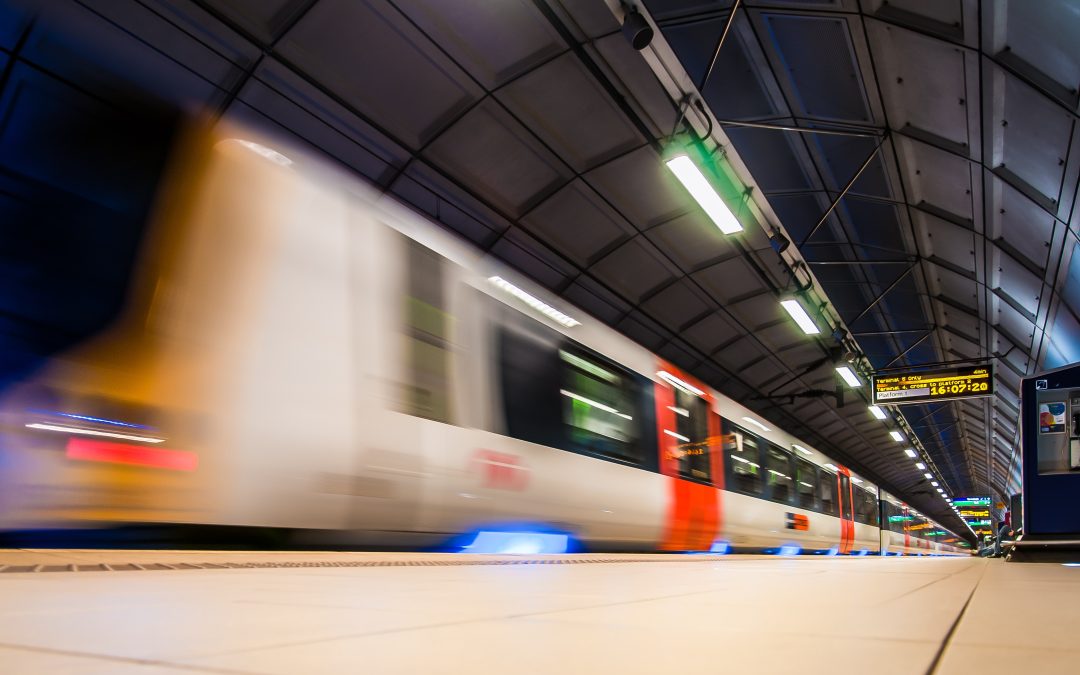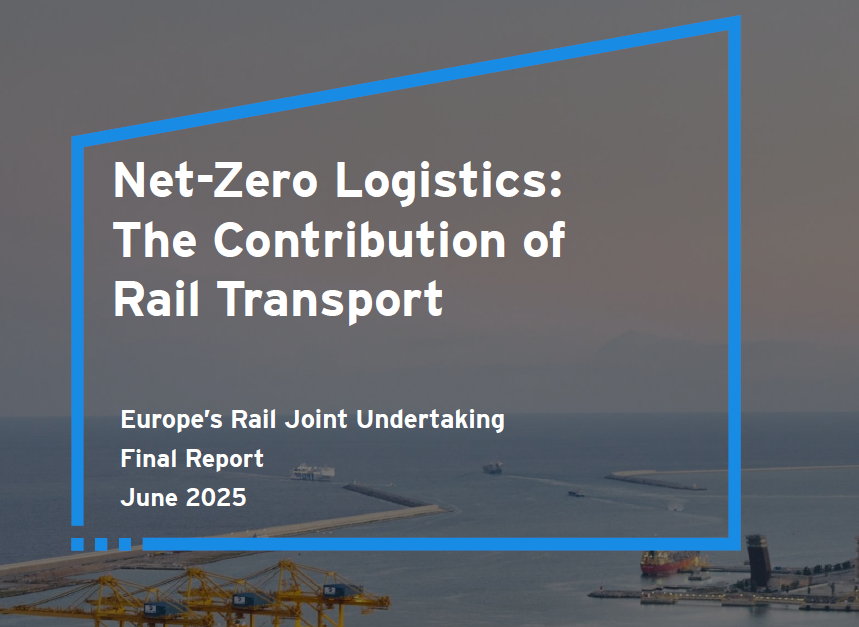Europe must take decisive steps to simplify and modernise its rail systems to strengthen competitiveness,...
To benefit the rail sector and its final users, our new Flagship Project 3 (FP3) IAM4RAIL, worth EUR 106.9 million with 94 partners, is ready to enhance efficiency, safety, reliability, and sustainability of European railways by taking rail asset management to new depths, contributing to the wider European Union objectives. In this article FP3 IAM3RAIL Coordinator, David Iban Villalmanzo Resusta from our Founding Member ADIF explains what to expect from the project.
Tell us what is meant by ‘Holistic and Integrated Asset Management’ and why is it important to improve the rail systems in Europe?
“Holistic and Integrated Asset Management” refers to a comprehensive approach to managing assets that takes into account various interconnected factors, including maintenance, operations, financial considerations, and overall system performance. It involves optimising resources, data, and strategies to ensure efficient functioning and longevity of assets, considering the entire lifecycle of assets.
In the context of rail systems in Europe, asset management plays an essential role in the improvement of the overall rail system. It enhances efficiency, safety, reliability, and sustainability while fostering harmonised approach and collaboration among different rail networks. Taking a holistic and integrated view for asset management considering assets as part of a larger interconnected system, railways can improve the optimisation of maintenance schedules, reduction of downtimes, and maximisation of resource utilisation, leading to cost savings and improved efficiency.
Moreover, coordinated asset management identifies potential safety risks and addresses them proactively, enhancing overall rail safety. The goal of the EU-Rail integrated Programmeis to develop solutions (i.e. technologies, methods, procedures / algorithms) fitting in a comprehensive approach for asset management to ensure that assets are maintained and operated to minimise breakdowns and disruptions, ultimately increasing the reliability of rail services. Integrating asset data and information enables informed decision-making, supporting predictive maintenance and effective planning. By adopting an integrated approach to asset management, rail systems can be more efficiently operated and maintained as well as upgraded, resulting in the aforementioned various benefits.
What is the role of new concepts like artificial intelligence and digital twins in rail asset management and how can they revolutionise rail systems?
Artificial Intelligence (AI) and Digital Twins (DT) play a pivotal role in rail asset management by introducing advanced capabilities and efficiencies.
AI, in the context of rail asset management, involves the use of machine learning algorithms to analyse vast amounts of data from sensors and other sources. For example, AI can be employed for predictive maintenance, where it analyses data to predict when railway components need servicing or replacement, reducing downtime and costs or it can optimise train schedules for improved efficiency. AI can help analyse data from different sources and find correlation between irregulates in patters as well as understanding the meaning of these. It is important that the models derived from this exercise using AI technology leads to applications that secure accountability and oversight that are maintained by ensuring that humans can comprehend, supervise, and control the design and operation of AI-based systems, and that those involved in development take responsibility for their functioning and consequences. Image recognition, used for tasks like monitoring rail infrastructure, is one area where AI is applied, and these models are trained by humans, adhering to these ethical principles.
On the other hand, Digital Twins offer a solution for real-time monitoring and analysis without impacting physical assets. DT enable risk-free simulation, predictive modelling, and optimised decision-making. Furthermore, digital twins can aid in design, planning, and remote monitoring of assets, reducing life-cycle costs and improving safety.
The combined impact of AI and Digital Twins on rail asset management is paving the way for innovative approaches pushing the boundaries of rail system capabilities. Some improvement foreseen are:
- Improved Reliability: Predictive maintenance and anomaly detection minimise disruptions and enhance asset reliability, leading to more dependable rail services.
- Enhanced Safety: AI-driven monitoring and digital twins enable proactive identification of safety risks, leading to safer operations and reduced accidents.
- Lifecycle Extension and Sustainability: By predicting failures and optimising maintenance, the service life of rail assets can be extended, postponing the need for expensive replacements or upgrades and reducing unnecessary resource consumption and waste.
- Innovation: These technologies open doors to new possibilities, such as autonomous operations, remote interventions, and optimised asset design, pushing the boundaries of rail system capabilities.
What are the three main objectives of the EU-Rail FP3 IAM4RAIL project and how will they facilitate a fully integrated asset management for railways?
FP3 IAM4RAIL aims to create a comprehensive and integrated asset management framework for railways, promoting efficiency, safety, sustainability, and cost-effectiveness by enabling data-driven decision-making, enhancing monitoring and diagnostics as well as improving sustainability. These are the main objectives of FP3-IAM4RAIL:
- Cost-Effective Asset Management with Digital Technologies: One of the primary objectives is to develop a common European asset management framework that utilises digital technologies and data analytics to address short, mid, and long-term interventions for both infrastructure and rolling stock. By integrating information across the supply chain, including Traffic Management System (TMS), FP3 IAM4RAIL aims to reduce life-cycle costs and extend asset life cycles. This will involve advanced diagnostic technologies, data exchange interfaces, and efficient maintenance planning.
- Advanced and Holistic Asset Decisions: The project seeks to develop methodologies and technologies that enable advanced and holistic decisions throughout the life cycle of railway assets. This includes probabilistic models for life cycle cost determination, cooperative diagnosis between assets, and AI-based hybrid decision support. By combining operational and IoT data with additional information and knowledge, these solutions enhance decision-making accuracy, predict anomalies, and optimize maintenance strategies.
- Environmentally Friendly Asset Production: Another key objective is to establish environmentally friendly production processes for resilient assets. The project aims to leverage new design principles, fabrication techniques, and materials that are ethical by design. This objective focuses on reducing the environmental impact of asset production while ensuring high-quality and durable results.
What are some of the main challenges the project will have to overcome?
FP3 IAM4RAIL project aims to achieve ambitious goals in rail asset management through the integration of advanced technologies. However, several challenges need to be overcome to successfully implement these objectives and it will require the collaboration among stakeholders, thorough planning, iterative testing, and adaptability. Some of the challenges are:
- Data Integration and Interoperability: integrating information from various sources requires standardised interfaces and protocols. Ensuring compatibility and interoperability between different data sources and systems is a challenge that demands careful planning.
- Technological Integration: integrating AI, digital twins, and other advanced technologies into existing rail systems and their respective technical and operational subsystems requires a seamless integration process. Ensuring that these technologies work together harmoniously can be technically complex and may require retrofitting existing systems.
- Complexity of Demonstration: demonstrating the effectiveness of the proposed solutions across various relevant scenarios at TRL 6/7 (and higher at later stages of the EU-Rail Programme implementation) presents challenges to achieve such maturity levels and variety of situations to find useful and harmonized solutions in this frame. Each scenario may involve different operational conditions, asset types, and use cases, requiring thorough testing and validation.
- Scalability: ensuring that the developed solutions can scale across various rail networks and regions in Europe is a challenge. Factors like network size, infrastructure variations, as well as operational and regulatory differences need to be taken into account.
- Data Security and Privacy: handling sensitive data related to asset status, maintenance planning, and operations requires robust security measures to protect against unauthorised access and data breaches. Ensuring data privacy while enabling efficient information sharing is a balancing act.
- Training and Capacity Building: introducing new technologies requires training and skill development among railway personnel. Ensuring that the workforce is equipped to operate, maintain, and optimise these technologies is crucial.
When can we expect to see the first results coming from the project and what will these results cover?
FP3-IAM4RAIL has a duration of 48 months. As the project needs to attain a high level of technical maturity in its developments, validate these technologies through demonstrators, and ensure their alignment with industry standards and requirements, this will not happen in most areas until its second half. Specifically, the project comprises 7 demonstration objectives, each addressing distinct facets of rail asset management, encompassing more than 50 use cases.
As already expressed, these demonstrators aim to achieve Technology Readiness Levels (TRL) up to level 7. The project will initiate with a phase focused on defining technical specifications and requirements which should last for around 12-14 months. This will be followed by phases involving data acquisition, data analysis, and technology development, taking place up until the beginning of 2025 and that will pave the way for the third phase of demonstration and validation. The target will be to have all WPs’ demonstrators ready by end 2025 in order to evaluate the results achieved and implement a gap analysis for the next generation projects.
What are the demonstrations expected to be carried out in the project and is there a calendar for those interested?
This Flagship Project demonstrations are organised into clusters of activities that correspond to different areas of focus within the project. Different is the time schedule of the demonstrators but for each cluster is expected a demonstration and validation phase that is foreseen from beginning of 2025 onwards.
These are the demonstrations of technical FP3 IAM4RAIL clusters:
- Cluster B – Wayside Monitoring and TMS Link. Demonstrations will focus on the design, deployment, and validation of an Intelligent Asset Monitoring System for wayside assets. This includes securely collecting, storing, and analysing data from wayside assets and sharing information with the Traffic Management System (TMS).
- Cluster C – Rolling Stock Asset Management: On-board and Wayside Technologies. Demonstrations will cover both on-board and wayside technologies for monitoring rolling stock assets. This includes capturing data, performing intelligent data analytics, and using the results to inform maintenance strategies and actions.
- Cluster D – Infrastructure Asset Management. Demonstrations within this cluster will address various aspects of infrastructure asset management, including long-term maintenance, track systems, innovative infrastructure applications, and civil assets such as structures, earthworks, and geotechnics.
- Cluster E – Railway Digital Twins. Demonstrations in this cluster will focus on implementing railway Digital Twins to optimise processes, maintenance planning, and logistics related to the design, maintenance, upgrade, and renewal of railway assets.
- Cluster F – Environment, User, and Worker Friendly Railway Assets: Demonstrations within this cluster will showcase environmentally friendly, user-friendly, and worker-friendly railway assets. This includes optimising design solutions for tracks and turnouts, using additive manufacturing repair processes, developing robotic platforms for interventions, and implementing Augmented Reality (AR) and exoskeletons to support maintenance.
Can you explain how integrated assets management contributes to the European Green Deal and the Sustainable and Smart Mobility Strategy?
FP3 IAM4RAIL as part of EU-Rail integrated Programme directly contributes to the objectives of the European Green Deal and the Sustainable and Smart Mobility Strategy by developing innovative solutions that enhance the sustainability, efficiency, and environmental performance of the European rail sector. Through its integrated asset management approach, the project aligns with the EU’s vision of a greener, more connected, and sustainable future, in detail:
- Digitalisation and Innovation: FP3 IAM4RAIL’s integration of digital twins, AI, and data analytics into rail asset management supports the Sustainable and Smart mobility Strategy’s push for digital transformation and innovation to create a more sustainable, competitive, and resilient European economy.
- Reducing Environmental Impact: The project’s focus on environmentally friendly production of resilient assets aligns with the European Green Deal’s objective of achieving climate neutrality by 2050. By developing new design principles, solutions, and fabrication techniques that consider sustainability, the project contributes to reducing the carbon footprint of rail infrastructure and rolling stock.
- Transition to Net-Zero Emissions: The project places importance on achieving by adopting new materials, design principles, solutions, and fabrication technologies. By developing technologies that support the reduction of emissions in rail operations, FP3-IAM4RAIL contributes to the EU’s sustainability goals.
- Safety, efficiency and reliability: The Sustainable and Smart Mobility Strategy aims to promote a seamless, sustainable, and safe mobility system for Europe. FP3 IAM4RAIL’s demonstrations and solutions enhance rail services’ safety, efficiency, and reliability, aligning with the strategy’s goal to provide smart and sustainable mobility options that reduce congestion and environmental impact.
- Efficient Resource Use: The project’s focus on optimising asset management across all planning horizons, reducing maintenance costs, and extending asset life aligns with the Sustainable and Smart Mobility Strategy’s objective to use resources efficiently, enhance infrastructure utilisation, and improve overall transport system performance.
How is the work done in the Shift2Rail IP3 projects facilitating the work of FP3 IAM4RAIL and are there
The work done in the Shift2Rail (S2R) R&I Innovation Programme 3 (IP3) projects has provided a foundation for the FP3s IAM4RAIL in various key aspects of railway asset management.
Some of the major scenarios addressed in IP3 that are going to be improved and extended in FP3-IAM4RAIL are:
- Integration of data from different Railway systems. FP3 IAM4RAIL will build upon the results achieved in IN2SMART2 on the topic of IAMS (Intelligent Asset Management Systems) by improving the platform capabilities for data collection, processing, and correlation. Crucially, the objective of the project will be to interact with the TMS, sharing analytics results and prediction to improve the management of train operation. One example of such interaction might be that IAMS suggest to the TMS an alternative route inside a train station for the scheduling of heavy freight trains in order to reduce the stress on old or anomalous switches and limit the possibility of failures. In doing so, FP3 IAM4RAIL will also build upon the work done on the CDM (Conceptual Data Model) in previous S2R projects and provide contribution for its enhancement.
- New generation of monitoring systems. The work done in IP3on the development of non-invasive monitoring systems will serve as the baseline for many WPs with the goal of integrating both wayside and on-board data for the monitoring of railway assets. Also, the work done in the standardisation of data exchange interfaces (including CDM) will facilitate the objectives of the project.
- Remotely controlled & unmanned interventions. Building upon the results of IN2SMART2 and the Open Call project STREAM, FP3-IAM4RAIL will work on the enhancements of non-invasive solutions to increase automated intervention. This include the development of robotics systems for inspections and interventions, the implementation of Augmented Reality (AR) and the use of exoskeletons to support maintenance.
- Predictive approach to Asset Maintenance. The results achieved in IN2SMART2 S2R project show that the integration of data analysis and Machine Learning (ML) approaches can significantly improve the maintenance process, removing some of the more demanding tasks for the operator and correlating information from multiple sources to provide more precise prediction on the status of the different assets. FP3 IAM4RAIL will build on these results by integrating the human expertise into the validation of analytics results and by developing a prescriptive approach (based on the Open Call project Daydreams) to asset maintenance.
- Digital Twin. The results achieved in IN2SMART2 S2R project will serve as the base for the new generation of Digital Twin applications, with the integration of of BIM and GIS tools and virtual/augmented reality for asset status visualisation and the demonstration of these technologies at a higher TRL.
It is important to highlight that FP3 IAM4RAIL is also exploiting the most promising results of other projects from the Shift2Rail predecessor R&I Programme, for example in the Innovation Programme 1 (e.g. PIVOT-2) for its uses cases focusing on the monitoring of rolling stock assets.
How is FP3 IAM4RAIL interacting with the other EU-Rail FPs and the System Pillar?
FP3 IAM4RAIL is engaging in extensive interactions with other EU-Rail Flagship Projects (FPs) and the System Pillar to ensure a coherent and effective approach towards advancing rail innovation and efficiency. The project’s contributions are directed towards the regulation, standardisation, and overall improvement of the railway system.
FP3 aims to collected inputs from FP1 to integrated TMS demonstrator components with IAMS demonstrator developed within as well as align Digital Twins solutions under development with FP1 (i.e. CDM and Digital Twins).
The FP3-FP5 alignment is mainly focused on on the development of the in areas related to European railway checkpoints and Condition-Based Monitoring (CBM) algorithms. This involves exchanging background information, use cases, and requirements.
FP3-IAM4RAIL established a collaboration and coordination with the System Pillar to transfer relevant elements such as building blocks for CDM, and reference architecture. Also, the necessary sharing of inputs, with specifications and characteristics to create or update standards and TSIs.
Why is the work done in this project important for the final users and especially passengers?
The work carried out in the FP3 IAM4RAIL is of significant importance to both final users, including passengers, and the overall rail ecosystem.
Passengers benefit from the project’s focus on improved asset management, as it leads to more reliable and efficient rail services. By minimising in-service failures, disruptions, and maintenance-related delays, passengers can enjoy a smoother and more predictable travel experience. Reduced downtimes and optimised maintenance practices result in fewer service interruptions and improved punctuality.
[1] https://rail-research.europa.eu/wp-content/uploads/2022/03/EURAIL_MAWP_final.pdf
[2] https://projects.rail-research.europa.eu/eurail-fp3/
















